GCSE
-
🏅Model GCSE Essay on the Feud in Romeo and Juliet
If you’re teaching or studying Shakespeare’s ‘Romeo and Juliet’, you’ll know that essays about the family feud often hover around a Grade 4, 5 or 6—what examiners might call ‘middling’ or ‘competent’ responses. But with a few targeted improvements, these essays can be transformed into top-grade responses. I’ve updated one of my most popular blog posts to show exactly how to do this, paragraph by paragraph, with comments, grade 9 tips, and clear marking guidance for teachers and pupils alike. The key is to move beyond surface-level understanding and begin thinking like a literary analyst. That means really digging into Shakespeare’s language (AO2), showing a secure knowledge of the play and its themes (AO1), and crucially, thinking about why Shakespeare wrote what he did, and how his audience might have reacted (AO3). This is where the 5Ws strategy—Who, What, Where, When, Why—comes in. For example, instead of simply quoting the Prologue’s “ancient grudge” to describe the feud, a top-grade response will explore the word “ancient” in more depth. What does it suggest about tradition, time, and decay? What kind of audience would Shakespeare have been writing for, and why might he start with such a phrase? A Grade 9 student doesn’t just spot a quote—they zoom in on the language, explain the technique being used, and link it to Shakespeare’s bigger message about love, hate, and fate. I’ve used a visual symbol system in the new version of this post to make each part of the answer easier to teach and understand. A pencil icon stands for thoughtful analysis, a book and quill symbol represents literary and historical context, and a checkmark indicates where a pupil is showing Grade 8–9 thinking. I’ve also added a quiet but clear visual: a student figure at the centre of the learning, reminding us this is about developing real, mindful confidence—not just ticking boxes. This new breakdown works well for teachers modelling essays in class, for pupils revising independently, and for tutors looking for a clear teaching sequence. And if you’re looking for more structured support, I’d recommend my edition of the play, Romeo and Juliet: The Complete Play with Integrated Study Notes and Smart Translation—ideal for exploring language, structure and context in one place. For teachers, The Mindful English Teacher includes ideas for making literary analysis more inclusive, reflective, and emotionally aware. You can view the updated post and download the image resources now at francisgilbert.co.uk, or find the essay thread pinned to my socials. Let me know how you use it, and feel free to tag me with examples of Grade 9 insights from your own pupils!
-
Teaching 1984 in the surveillance culture of schools
Teaching Orwell’s “1984” as a set text in an examination-obsessed and heavily surveilled school system.
-
Brontë’s Wuthering Heights: The Study Guide Edition
Aimed specifically at pupils reading the book for exams. The complete text is punctuated by analysis and questions on every chapter with answers provided at the back. Essential reading for all students and teachers!
-
Mary Shelley’s Frankenstein: The Study Guide Edition
This edition of Shelley’s classic horror novel contains a comprehensive study guide, as well as extensive questions for students to help their understanding. Buy the paperback, and you get the e-book for free, so you can use the embedded web links.
-
Austen’s Pride and Prejudice: The Study Guide Edition
Aimed specifically at students and teachers reading the book as an exam text, with a detailed introduction that outlines the historical context of the novel, the ways in which it was influenced by the other genres/writers and how it is structured.
-
Analysis and Study Guide: Dr Jekyll & Mr Hyde
This brilliant edition of Stevenson’s novel may be the answer to your prayers. Written by an experienced teacher and best-selling author, this version is aimed at students who must analyse the text in depth or teachers wanting to deliver outstanding lessons on it.
-
My blogs, YouTube, Soundcloud and Twitter channels…
Together with a number of other eminent journalists and educationalists, I co-founded and help run the popular educational blog, Local Schools Network. I also blog for Mumsnet on Tales Behind The Classroom Door. My YouTube channel is Wonderfrancis. My Soundcloud Channel is Electric Schubert. I am @wonderfrancis on Twitter. Other blogs: A Streetcar Named Desire for […]
-
Proof that GCSE are more rigorous than O Levels?
I spent an interesting morning at Television Centre today, appearing on Broadcasting House, the Sunday morning magazine show hosted by the affable Paddy O’Connell. Taking a light-hearted look at the current O Level and GCSE debate, he sat an English O Level question and a GCSE one; they were both ‘writing’ or composition questions. As a […]
-
Wilfred Owen’s poetry — a Prezi with links to YouTube explanations of the poems
Wilfred Owen’s poetry and life on Prezi
-
Using personal experience to improve your writing
Using personal experience to improve on Prezi
-
How did Edinburgh influence the writing of Dr Jekyll and Mr Hyde?
I think I’m getting a bit better at making these videos now. I produced this video for my GCSE pupils who have not been to Edinburgh but really need to know how the city influenced the writing of Dr Jekyll and Mr Hyde for their English Literature exam. Robert Louis Stevenson had a love-hate relationship with […]
-
Five reasons why Media Studies is a great subject
I used to be a bit sceptical about the whole idea of Media Studies until I started teaching it at A Level. The process of choosing a suitable syllabus (we opted for OCR), devising schemes of work and delivering the lessons over the last few years has now convinced me that it should be an […]
-
A grade essay on A Passionate Shepherd and The Nymph’s Reply
Plan: Passionate shepherd… Nymph’s reply… Sims: -Direct language -Rhythm Diffs: -Imagery (remember caesura!) – Answer: In ‘The Passionate Shepherd’ a shepherd is pleading to a nymph (a beautiful woman) to go and live with him in the countryside. To persuade the nymph to go with him, Marlowe uses beautiful imagery of nature being harmonious […]
-
How does Hemingway develop a sense of anticipation and drama at the beginning of the Old Man and the Sea?
Hemingway’s opening is dramatic for a number of reasons. Read through the first two pages and/or listening to my podcast, and then list FOUR ways Hemingway develops a real sense of anticipation in the opening of the novel. Do you agree with these points? 1. Hemingway immediately tells us that there is a great deal […]
-
Composed on Westminster Bridge — an explanation for GCSE English Literature Podcast
Composed on Westminster Bridge; an audio explanation by Francis Gilbert “Composed upon Westminster Bridge, September 3, 1802” is a sonnet by William Wordsworth describing London, viewed from one of the bridges over the Thames, in the early morning. It was first published in 1807. Earth has not anything to show more fair: Dull would he be of […]
-
Town and Country quiz – revising the poems
Please add in annotations to the poems if/when you see fit as you are answering these questions London What does Blake notice in every face he meets? (weakness, woe or sorrow) TRUE OR FALSE: ‘Mind-forged manacles’ are chains created by minds which have been oppressed or brainwashed They are a special type of clothing people […]

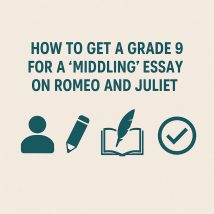

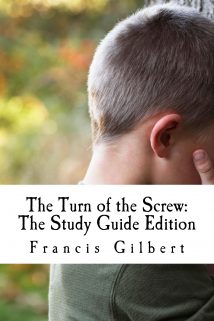

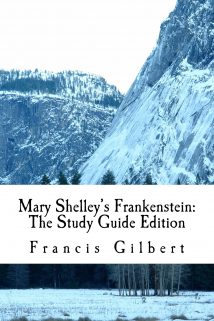
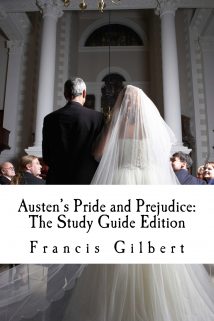
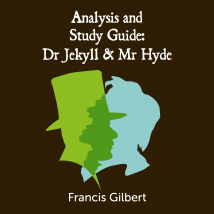
The government is wrong to devalue vocational qualifications
Vocational courses help students develop key skills employers are crying out for. League tables should reflect this The government’s decision to drastically downgrade the value of vocational qualificationsis deeply troubling for teachers like me, and must be sending many schools and colleges into a tailspin of despair. At the moment over half a million teenagers are […]